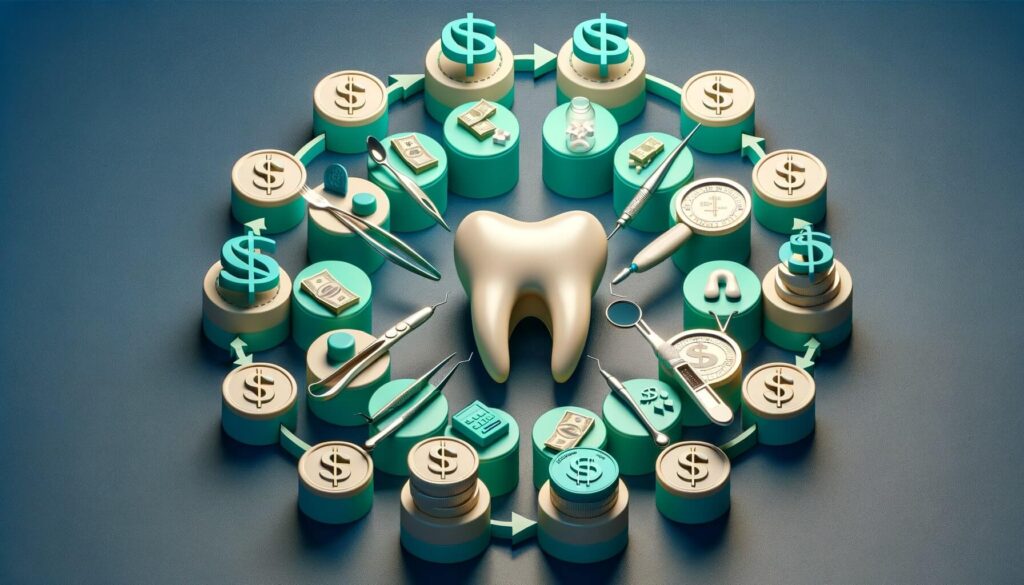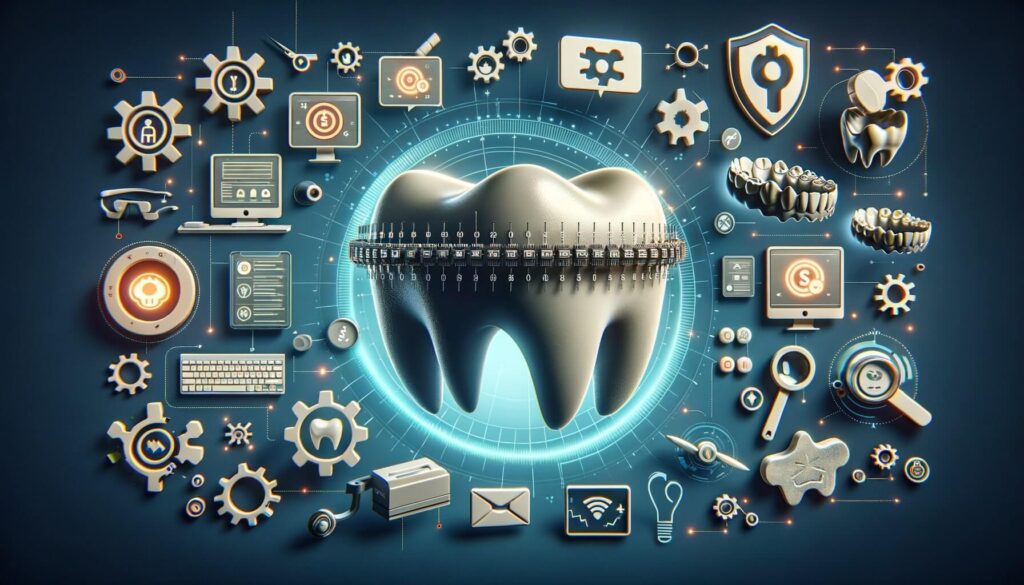Orthodontic and clear-aligner plans have become increasingly popular in recent years, as more and more people seek to improve their smiles and correct dental issues. These treatment plans often involve multiple visits to the orthodontist or dentist over an extended period of time, making it necessary to find a convenient and efficient way to handle payments. This is where recurring billing comes in.
Recurring billing is a payment method that allows businesses to automatically charge customers on a regular basis, typically monthly or annually, for products or services. It eliminates the need for manual invoicing and payment collection, streamlining the payment process for both the provider and the patient. In the context of orthodontic and clear-aligner plans, recurring billing can greatly simplify the payment process and improve the overall patient experience.
Understanding the Benefits of Recurring Billing for Orthodontic and Clear-Aligner Plans

There are several key benefits to implementing recurring billing for orthodontic and clear-aligner plans. Firstly, it provides convenience for both the provider and the patient. With recurring billing, patients no longer have to worry about remembering to make payments or dealing with the hassle of manual invoicing. Payments are automatically deducted from their chosen payment method, ensuring a seamless and hassle-free experience.
From the provider’s perspective, recurring billing reduces administrative tasks and improves cash flow. Instead of spending time and resources on manual invoicing and payment collection, staff can focus on providing quality care to patients. Additionally, recurring billing ensures a steady stream of revenue, as payments are automatically processed on a regular basis.
Step-by-Step Guide: Setting Up Recurring Billing for Orthodontic and Clear-Aligner Plans
Setting up recurring billing for orthodontic and clear-aligner plans requires careful planning and consideration. Here is a step-by-step guide to help you navigate the process:
1. Determine your billing frequency: Decide how often you want to charge patients for their orthodontic or clear-aligner plans. Common options include monthly, quarterly, or annually. Consider factors such as the length of the treatment plan and the preferences of your patients.
2. Choose a recurring billing software: Select a reliable and secure recurring billing software that is specifically designed for healthcare providers. Look for features such as automated payment processing, customizable payment plans, and integration with your existing practice management system.
3. Set up payment options: Determine the payment methods you will accept for recurring billing. This can include credit cards, debit cards, and electronic funds transfers. Ensure that your chosen software supports these payment options and provides a secure payment gateway.
4. Create payment plans: Define the different payment plans you will offer to patients. This can include options such as paying in full upfront, monthly installments, or a combination of both. Consider offering flexible payment plans to accommodate different financial situations.
5. Obtain patient consent: Inform patients about the recurring billing process and obtain their consent to charge their chosen payment method on a regular basis. This can be done through a signed agreement or an online consent form.
6. Input patient information: Enter patient information into the recurring billing software, including their contact details, treatment plan details, and payment preferences. Ensure that the software securely stores this information and complies with data protection regulations.
7. Test the system: Before fully implementing recurring billing, conduct thorough testing to ensure that the software is functioning correctly and payments are being processed accurately. This will help identify any potential issues or errors.
8. Communicate with patients: Clearly communicate the recurring billing process to patients, including the payment schedule, amount, and any other relevant details. Provide them with a contact person or support line in case they have any questions or concerns.
9. Monitor and manage payments: Regularly monitor and manage recurring payments to ensure they are being processed correctly. Address any payment failures or issues promptly to maintain a positive patient experience.
10. Review and optimize: Continuously review and optimize your recurring billing process to identify areas for improvement. Solicit feedback from patients and staff to identify any pain points or opportunities for streamlining the process.
Choosing the Right Recurring Billing Software for Orthodontic and Clear-Aligner Plans

Selecting the right recurring billing software is crucial for the success of your orthodontic or clear-aligner practice. Here are some factors to consider when choosing a software solution:
1. Integration with practice management system: Ensure that the recurring billing software seamlessly integrates with your existing practice management system. This will allow for efficient data transfer and minimize manual data entry.
2. Customizable payment plans: Look for a software solution that allows you to create and customize payment plans to suit the needs of your patients. This can include options such as different payment frequencies, installment amounts, and payment methods.
3. Automated payment processing: Choose a software that automates the payment processing and collection process. This will save time and reduce the risk of human error.
4. Secure payment gateway: Security is paramount when handling sensitive patient payment information. Select a software that offers a secure payment gateway and complies with industry standards for data protection.
5. Reporting and analytics: Consider a software solution that provides comprehensive reporting and analytics capabilities. This will allow you to track payment trends, identify any issues, and make data-driven decisions to optimize your billing process.
6. Customer support: Look for a software provider that offers reliable customer support. This will ensure that any technical issues or questions can be addressed promptly, minimizing disruptions to your billing process.
Common Challenges and Solutions in Implementing Recurring Billing for Orthodontic and Clear-Aligner Plans

Implementing recurring billing for orthodontic and clear-aligner plans can come with its own set of challenges. Here are some common challenges and their solutions:
1. Patient education: Some patients may be unfamiliar with recurring billing and may have concerns about the process. To address this, provide clear and concise information about how recurring billing works, its benefits, and any security measures in place to protect their payment information.
2. Payment failures: Occasionally, payments may fail due to expired credit cards, insufficient funds, or other reasons. Implement a system that automatically notifies patients of failed payments and provides them with an easy way to update their payment information.
3. Data security and compliance: Handling sensitive patient payment information requires strict adherence to data security and compliance regulations. Choose a recurring billing software that is compliant with industry standards, such as PCI DSS, and regularly update your security protocols to protect patient data.
4. Payment disputes: In some cases, patients may dispute a payment or request a refund. Establish clear policies and procedures for handling payment disputes, including a dedicated point of contact and a transparent resolution process.
5. Staff training: Ensure that your staff is properly trained on how to use the recurring billing software and handle any issues that may arise. Provide ongoing training and support to keep them up to date with any software updates or changes.
Best Practices for Managing Recurring Billing for Orthodontic and Clear-Aligner Plans

To effectively manage recurring billing for orthodontic and clear-aligner plans, consider implementing the following best practices:
1. Clearly communicate payment terms: Provide patients with clear and transparent information about the payment terms, including the amount, frequency, and duration of payments. This will help manage expectations and reduce confusion.
2. Offer flexible payment options: Consider offering flexible payment options to accommodate different financial situations. This can include options such as paying in full upfront, monthly installments, or a combination of both.
3. Provide payment reminders: Send automated payment reminders to patients a few days before their scheduled payment date. This will help reduce the likelihood of missed payments and improve cash flow.
4. Regularly review payment trends: Monitor payment trends and analyze data to identify any patterns or issues. This can help you optimize your billing process and address any potential problems before they escalate.
5. Continuously improve the patient experience: Solicit feedback from patients and staff to identify areas for improvement in the recurring billing process. Actively seek ways to enhance the patient experience and streamline the payment process.
Ensuring Security and Compliance in Recurring Billing for Orthodontic and Clear-Aligner Plans
Security and compliance are of utmost importance when implementing recurring billing for orthodontic and clear-aligner plans. Here are some measures to ensure the security and compliance of your billing process:
1. Choose a secure payment gateway: Select a recurring billing software that offers a secure payment gateway. Look for features such as encryption, tokenization, and fraud detection to protect sensitive payment information.
2. Comply with data protection regulations: Ensure that your recurring billing software complies with relevant data protection regulations, such as the General Data Protection Regulation (GDPR) or the Health Insurance Portability and Accountability Act (HIPAA). Regularly review and update your data protection policies and procedures to maintain compliance.
3. Implement strong access controls: Limit access to patient payment information to authorized personnel only. Implement strong password policies, two-factor authentication, and regular access reviews to prevent unauthorized access.
4. Regularly update software and systems: Keep your recurring billing software and systems up to date with the latest security patches and updates. Regularly review and update your security protocols to address any emerging threats or vulnerabilities.
5. Conduct regular security audits: Perform regular security audits to identify any potential weaknesses or vulnerabilities in your billing process. Engage third-party security experts to conduct penetration testing and vulnerability assessments.
Frequently Asked Questions (FAQs) about Recurring Billing for Orthodontic and Clear-Aligner Plans
Q1: What is recurring billing?
A1: Recurring billing is a payment method that allows businesses to automatically charge customers on a regular basis, typically monthly or annually, for products or services.
Q2: What are the benefits of recurring billing for orthodontic and clear-aligner plans?
A2: Recurring billing provides convenience for both the provider and the patient, reduces administrative tasks, improves cash flow, and ensures a steady stream of revenue.
Q3: How do I set up recurring billing for orthodontic and clear-aligner plans?
A3: To set up recurring billing, determine your billing frequency, choose a recurring billing software, set up payment options, create payment plans, obtain patient consent, input patient information, test the system, communicate with patients, monitor and manage payments, and continuously review and optimize the process.
Q4: What should I consider when choosing a recurring billing software?
A4: When choosing a recurring billing software, consider factors such as integration with your practice management system, customizable payment plans, automated payment processing, secure payment gateway, reporting and analytics capabilities, and reliable customer support.
Q5: What are some common challenges in implementing recurring billing for orthodontic and clear-aligner plans?
A5: Common challenges include patient education, payment failures, data security and compliance, payment disputes, and staff training.
Conclusion
Recurring billing offers numerous benefits for orthodontic and clear-aligner plans, simplifying the payment process for both providers and patients. By automating payment collection and reducing administrative tasks, recurring billing improves efficiency, cash flow, and the overall patient experience.
To successfully implement recurring billing, it is important to choose the right software solution, carefully plan the billing process, and ensure security and compliance with data protection regulations. By following best practices and addressing common challenges, orthodontic and clear-aligner practices can streamline their payment processes and focus on providing quality care to their patients.
